Spring Color That Lasts
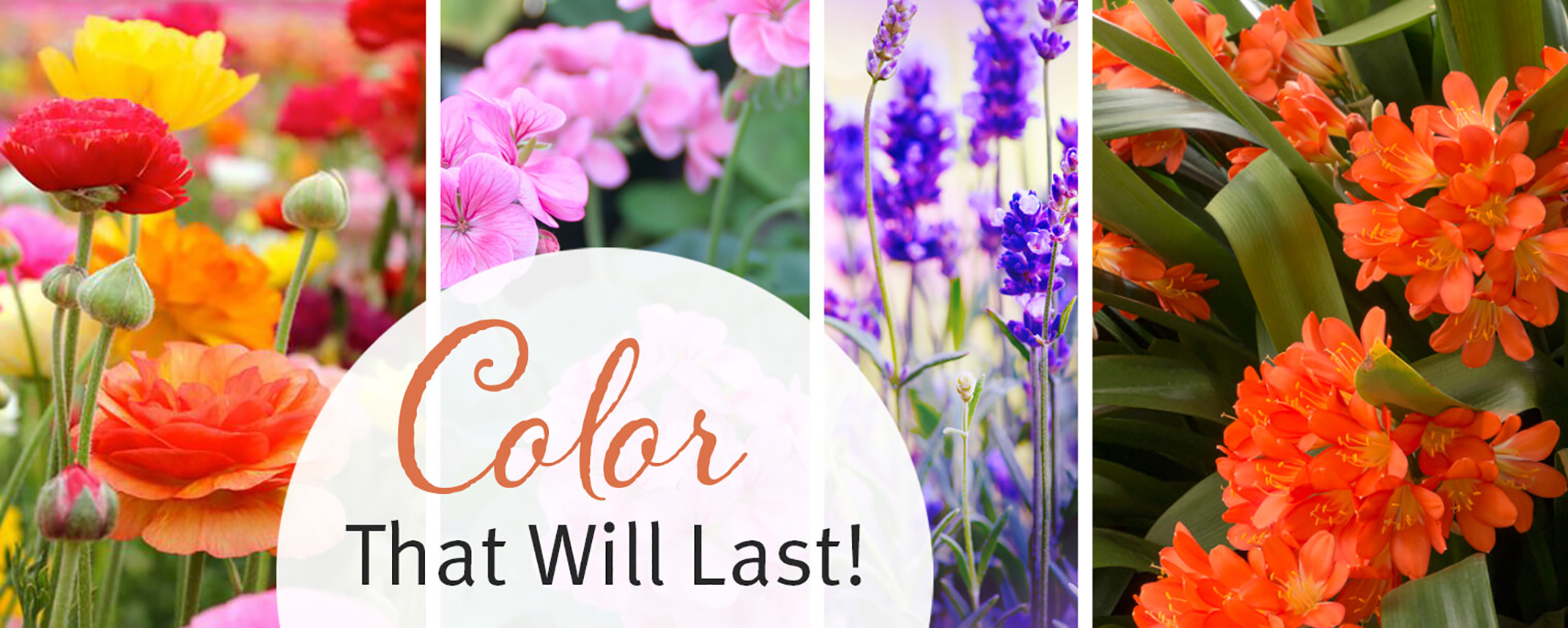
We've selected 6 of our favorite plants that will not only add amazing color to your landscape now, they are easy to care for and bloom spring and fall. Stop by to gaze at our lovely selection... Oh, and don't forget The Essentials to get you growing!
Bush Lily
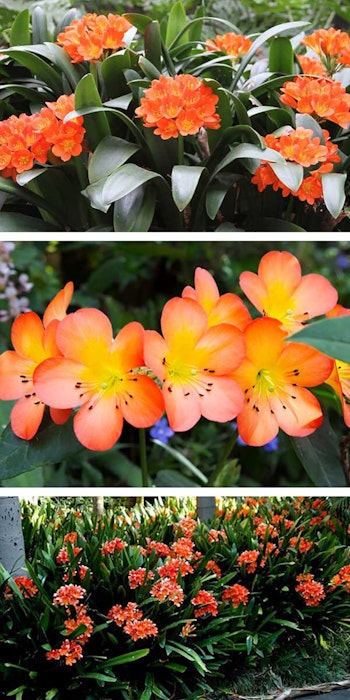
Clivias are wonderful, almost unkillable plants, which brighten the garden during late winter and early spring with clusters of vibrant yellow throated, orange or salmon trumpet flowers. The flowers are held on stalks above the clump of dark green strap-like leaves.
- Common name: Clivia or Kaffir lily
- Botanic name: Clivia miniata
- Best climate:Clivias come from South Africa and grow in most areas of Australia – from Tasmania to the Tropics. In warmer climates plants will become bleached and stressed if grown in full sun and allowed to dry out.
- Best Used:Planted in clumps in a shady area beneath a tree or on the shaded side of the house. Suitable for potted plants on shaded patios.
- Care:Prefers summer shade with mulch and good drainage. Water well in spring and summer but keep soil drier in autumn and winter. Use a complete fertilizer in spring. Dead head after flowering if desired (this removes seed heads). Otherwise leave them to set seed. Seedlings will take about four or five years before they flower.
Ranunculus
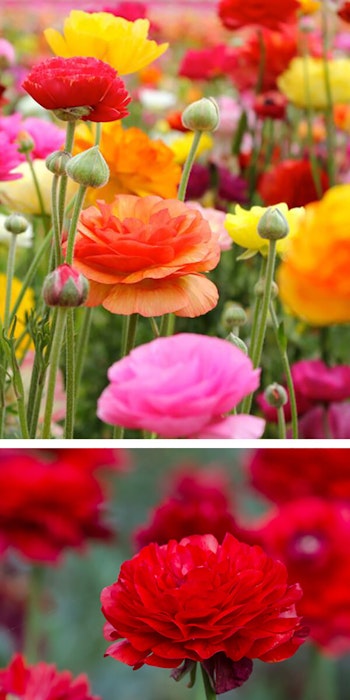
You might think ranunculus (Ranunculus asiaticus) flowers are made out of layers of ruffled crepe paper. Also called Persian buttercup, ranunculus is available in semi-double to fully doubled types in shades of orange, white, pink, salmon, gold and yellow. The plants are perfect for a spring cutting garden, livening up containers and in mixed beds.
Ranunculus needs full sun and well-drained soil. Drainage and proper watering is key or the tubers will rot. Amend heavy clay soils with lots of organic matter.
Site your ranunculus where they will receive full sun.
When in bloom, feel free to cut ranunculus flowers for bouquets. This will not hurt your plants, in fact, the more you cut the more blooms your ranunculus will produce. So snip away.
After blooming has finished for the season leave the foliage in place – don’t cut it off. The leaves will gather sunlight and provide nourishment for next year's show. Water as needed during active growth periods. Ranunculus actually prefer not to be watered while dormant.
At the end of the summer the leaves will yellow and die back as the plant slips into dormancy. Foliage many be removed at this point. Your ranunculus will rest for a few months before beginning the next growing cycle.
Osteospermum
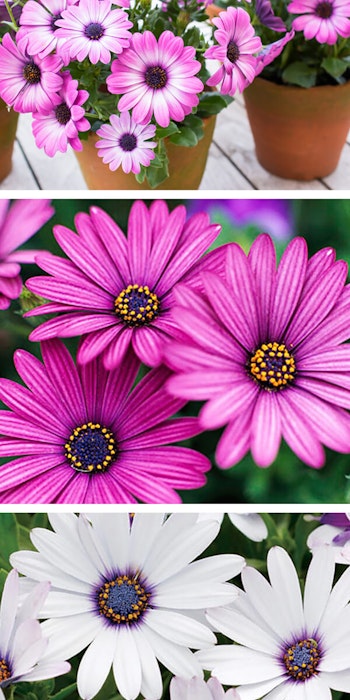
Osteospermums, similar to snapdragons and pansies, are most often grown as cool-season annuals that pack a fragrant punch. In many instances, the plants will take a break from blooming during the hot summer until cool nights resume in fall.
Ideally, osteospermum prefers full sun—the more sun you can give them, the better they will bloom. Osteospermum prefers evenly moist, well-drained soils. Be cautious, though—too-wet soil is a sure way to stress out, and even kill, osteospermums. Once they are established, they are fairly tolerant of drought. Remove any spent blooms and fertilize regularly to keep them blooming and looking their best.
One common pest you may see on osteospermums is thrips. These are long, green bugs that like to feed on flower pollen and use their sharp mouthparts to scrape the petals for water. This damages buds and contorts new growth. Luckily, there are many other beneficial insects out during the growing season that will keep these pests in check.
- Light: part sun to full sun
- Size:1 to 3 feet tall and 1 to 2 feet wide
- Colors: orange, pink, purple, white and yellow
- Blooms: spring and fall
- Special Features: attracts birds, great as cut flowers, perfect for containers and are low maintenance
Gerbera Daisies
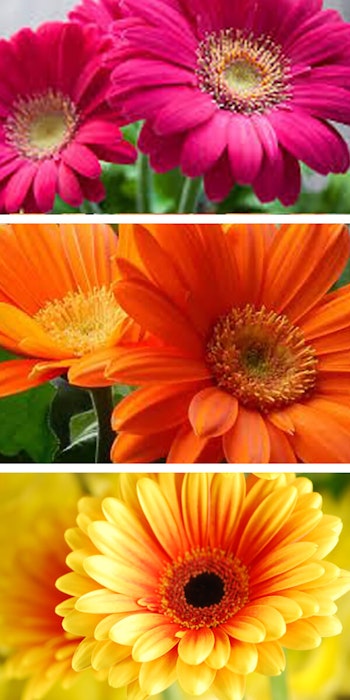
Gerbera daisies have long been a staple in the market of cut flowers. The sturdy stems on these blooms don't hollow out like other cut flowers. They also have an exceptional vase life, usually lasting up to 10 days.
Gerberas come in almost every color. There is variation in center eye color of the bloom with green, cream, or dark brown.
General care of gerbera daisies is simple, but they can be a little more needy of fertilizer than most annuals. Remove any spent blooms on your gerbera to redirect energy spent on seed production for continuous blooms instead.
- Light: full sun
- Size: 6 inches to 3 feet tall and 8 to 16 inches
- Colors: orange, pink, purple, red, white and yellow
- Blooms: spring through fall
- Special Features: attracts birds, great as cut flowers, perfect for containers and are low maintenance
Geraniums
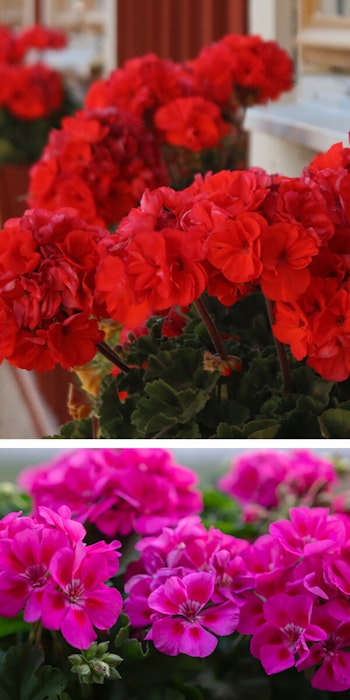
The geranium plant is a favorite among gardeners due to its versatility, ease of care and beautiful blooms. With the proper geranium care your plant can bloom from season to season. While there are many different types of geraniums, those that do best in the California climate are the zonal geranium, ivy geranium and Martha Washington geranium. Depending on the variety, the geranium flower can bloom in colors ranging from pinks and reds to oranges and white.
Plant Facts:
- Type: Zonal Geraniums Pelargonium x hortorum
- Size: 3-4 ft. tall and wide
- Bloom Time: Late Spring – Summer (all year with proper care)
- Sun-Shade: Full Sun to Partial Shade
- Water: Water regularly throughout growing season
- Soil Condition: Moist, well-draining
- Color: pink, red, white, coral, orange
Ivy Geraniums or Pelargonium Peltatum:
- Size: 1 – 2 ft. tall and wide
- Bloom Time: Summer - Fall
- Sun-Shade: Full Sun to Partial Shade
- Water: Water when top soil is dry
- Soil Condition: Moist, well-draining
- Color: pink, burgundy, white, red, bicolor
- Uses: Great for containers
Lavender
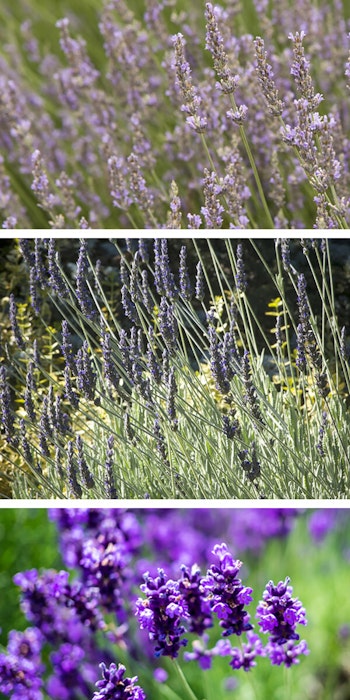
The lavender plant is one of the most beautiful and useful plants to add to your garden. From the fragrant, blue-purple flowers, to its ability to attract wildlife, this is one plant you will want in your yard! With proper lavender plant care, the flowers from the lavender plant can be cut for indoor use, used in the kitchen or even used to make essential oils. At SummerWinds Nursery, we carry many varieties of the English lavender plant and the Spanish lavender plant and our Trusted Garden Advisors can help you determine which is best for your garden. Our experts can also answer any questions you may have about how to plant lavender or when to plant lavender.
For more information on different types of Lavender and how to care for it in your garden,
Learn More
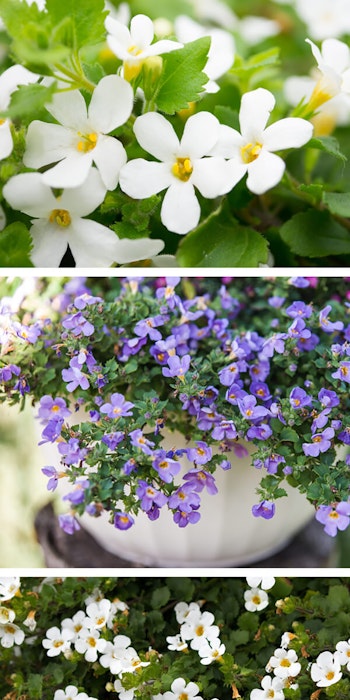
Bacopa
Bacopa is a creeping evergreen plant that produces small, five-petaled flowers with golden centers from late spring to first frost. This versatile little beauty looks great in hanging baskets and containers, where it can spill over the sides, or as a groundcover.
It requires regular water; allowing it to dry out or wilt can be fatal for the plant. In soils with poor drainage, it can easily rot. When the soil is dry to the touch an inch below the surface, give it at least an inch of water, or enough to thoroughly penetrate to the roots. Bacopa prefers morning sun and afternoon shade but can tolerate anything from full sun to partial shade, as long as it does not dry out.
Bacopa does best in rich soil. Pinch back the branches to help it form a dense mat. If it gets too thick and a layer of dead branches builds up underneath, clear away the dead foliage and cut the stems back to 5 or 6 inches. Leaving the dead material in place can hold in too much moisture and lead to rotting.
The Essentials
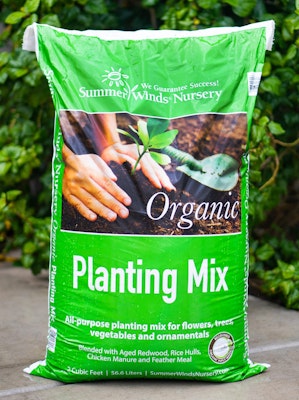
- SummerWinds Planting Mix
(2 cuft. Bag) -This all-purpose natural and Organic transplanting mix is ideal for all types of flowers, vegetables and ornamentals, including annuals, perennials, ground covers, shrubs, fruit and shade trees.
- For additional information on how
your success begins with great soil...
Learn More
Back To The Top
Sources:
- Better Homes & Gardens, “Osteospermum” at bhg.com
- Better Homes & Gardens, “Ranunculus” at bhg.com
- Better Homes & Gardens, “Gerbera Daisy” at bhg.com
- Burke's Backyard’, “Clivia,” at burkesbackyard.com/au
- Splan, Claire. "The Care of Bacopa." Home Guides | SF Gate, http://homeguides.sfgate.com/care-bacopa-74584.html. Accessed 12 March 2019.

